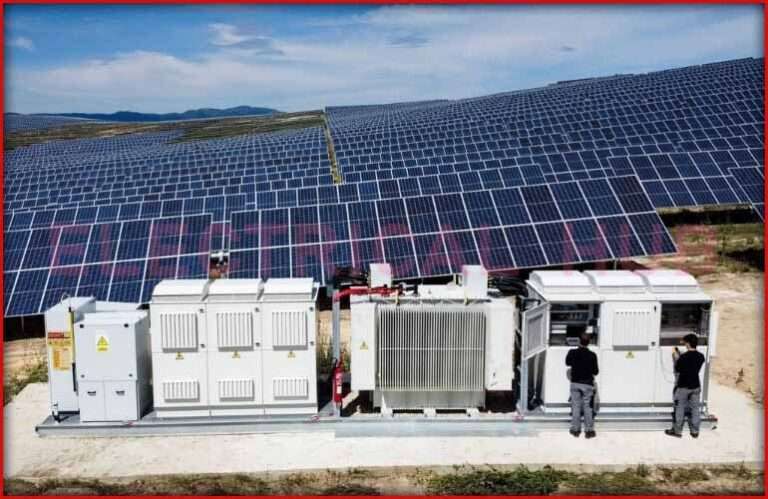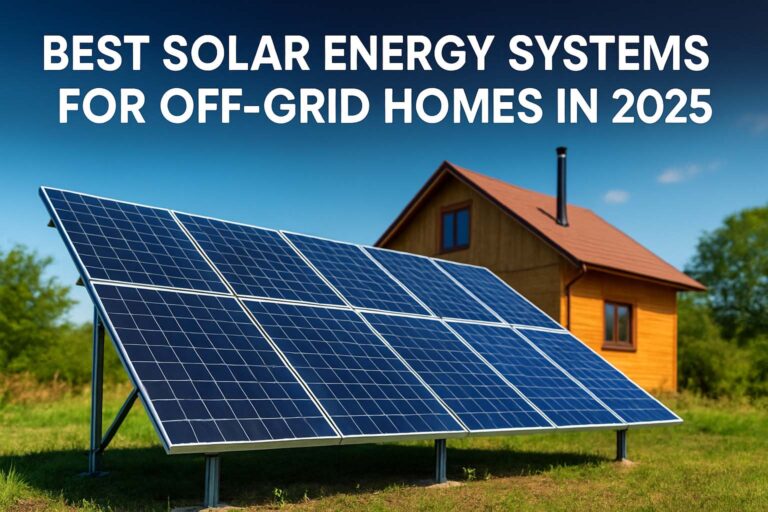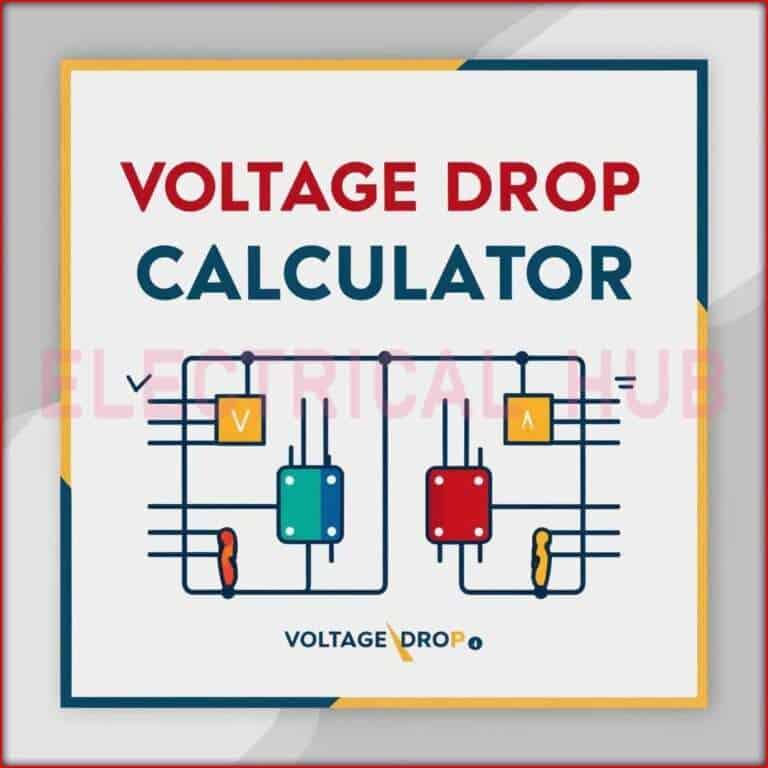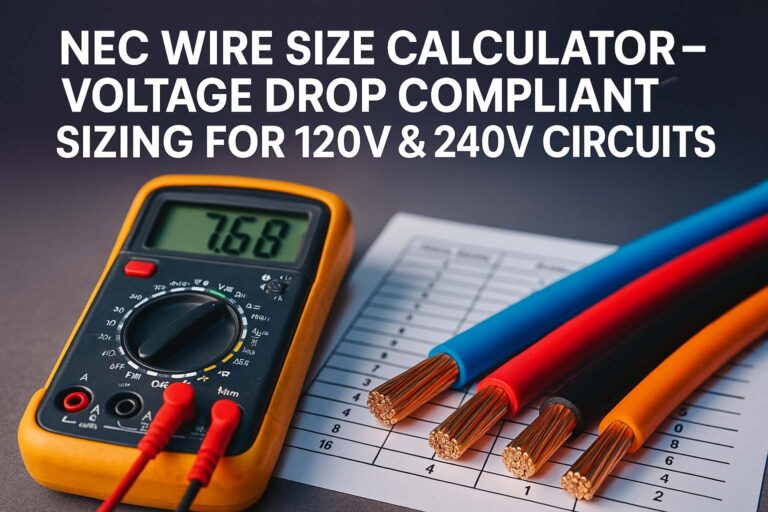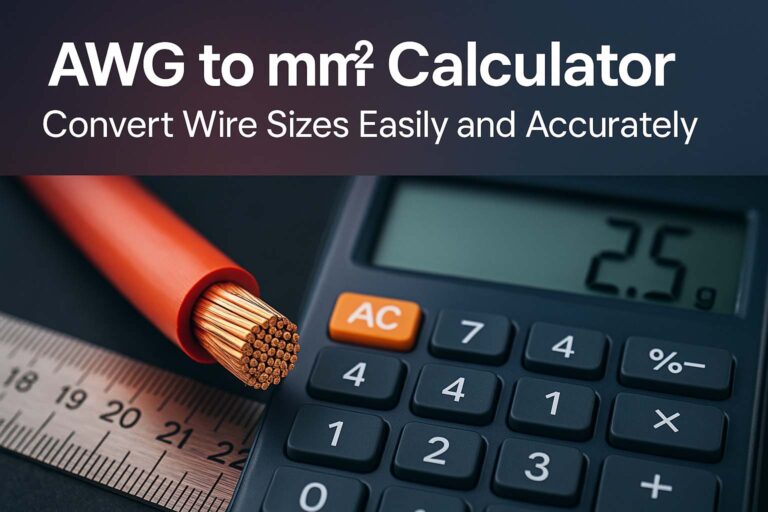Wire Size Calculator for Solar Panels – Avoid Power Loss in Off-Grid and Hybrid Systems
When it comes to designing a reliable solar system, wire size is one of the most underestimated aspects. Whether you’re working with an off-grid system or a hybrid setup, the wrong cable can create major losses. In solar PV systems, energy is precious. And every volt lost to resistance is money and performance gone to waste.
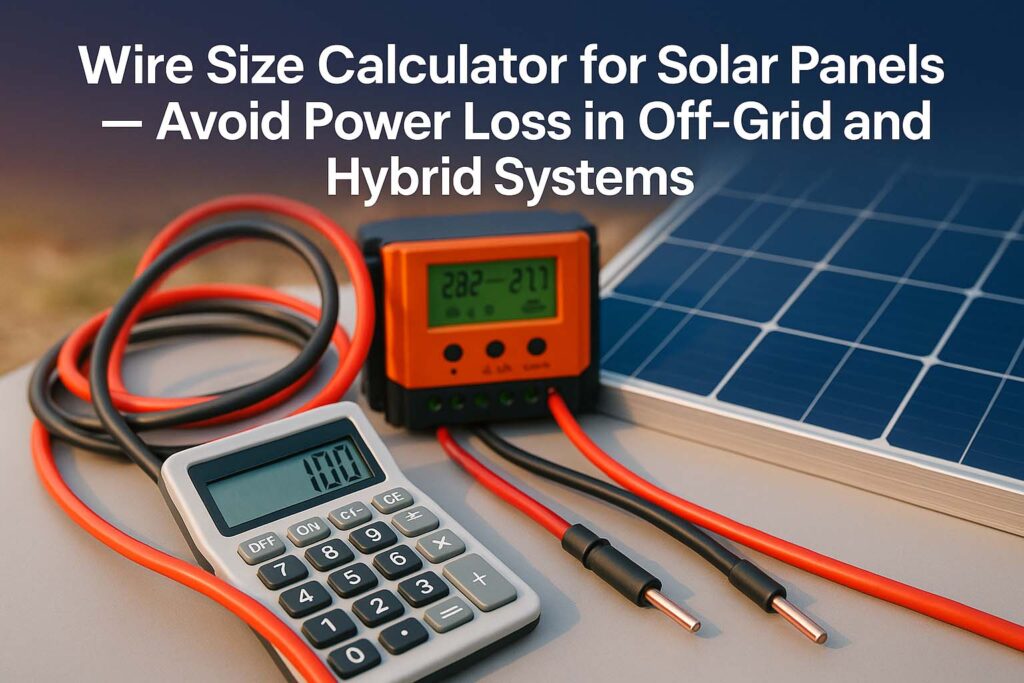
In this article, we’ll explore how to properly calculate the wire size for solar panels. We’ll explain how a solar wire size calculator works, and why off grid cable sizing needs more attention than typical home wiring. You’ll also understand how the PV wire gauge affects current flow and power efficiency.
Key Takeaways:
- Correct wire sizing prevents voltage drop and system inefficiencies.
- A solar wire size calculator is essential for precise cable selection.
- Off grid cable sizing requires consideration of distance, amps, and system voltage.
- Choosing the wrong PV wire gauge can result in serious power loss.
Wire Size Calculator for Solar Panels
Use our free online tool Free Electrical Wire Size Chart & Calculator – Find the Right Cable Every Time
Understanding the Role of Wire Size in Solar Systems
In any electrical system, wires act like the highways for electricity. But if the road is too narrow, traffic slows down. Similarly, if the wire is too small, you get voltage drop. That means the appliances or batteries on the other end receive less voltage than expected.
Solar energy systems—especially off-grid and hybrid systems—are sensitive to voltage drops. That’s because:
- They rely on battery charging efficiency
- The distances between panels and inverters can be long
- Current levels are often high in low-voltage systems
This is why using the correct PV wire gauge is vital. Even a small resistance in long cables can reduce performance.
Why You Need a Solar Wire Size Calculator
A solar wire size calculator takes the guesswork out of cable selection. Instead of using rule-of-thumb values, it computes the correct wire size based on:
- System voltage (12V, 24V, 48V, etc.)
- Maximum current (Amps)
- One-way or round-trip cable distance (Feet or Meters)
- Acceptable voltage drop percentage (typically 2% or less)
Without this tool, you’re left estimating values that could lead to undersized or oversized wires.
Example of Wire Size Calculation Inputs:
| Parameter | Value Example |
|---|---|
| System Voltage | 24V |
| Load Current | 25 Amps |
| Cable Distance | 20 meters |
| Voltage Drop Allowed | 2% |
The calculator uses Ohm’s Law and resistance data for copper or aluminum wires to suggest the correct gauge.
Use our free online tool Online Wire Gauge Calculator for 1 Phase and 3 Phase Load – Amp and Distance Based
Off Grid Cable Sizing: Why It’s More Critical Than You Think
In off-grid solar systems, you’re not connected to the utility grid. That means every component must work flawlessly, especially your wiring. A poor cable choice may:
- Overheat during peak loads
- Reduce charge efficiency
- Damage appliances
- Cause inverter shutdowns
Common Mistakes in Off Grid Cable Sizing:
- Using automotive cables for solar setups
- Not accounting for round-trip length
- Ignoring future expansion of panels or load
- Choosing wire based on cost, not performance
To avoid these pitfalls, always use a dedicated solar wire size calculator that considers all load parameters and cable lengths.
How PV Wire Gauge Affects System Performance
The PV wire gauge is a measure of the wire’s thickness or cross-sectional area. Thicker wires carry more current with less resistance. In North America, wire sizes are expressed in AWG (American Wire Gauge). The smaller the number, the thicker the wire.
Use our free online tool What Gauge Wire Do I Need? Free Online Calculator for Electricians & Homeowners
Quick Look at Common PV Wire Gauges:
| Wire Gauge (AWG) | Amp Capacity (Copper) | Typical Use Case |
|---|---|---|
| 14 AWG | 15 Amps | Short runs, low load circuits |
| 12 AWG | 20 Amps | Branch circuits for DC loads |
| 10 AWG | 30 Amps | String to combiner box wiring |
| 8 AWG | 40 Amps | Combiner to charge controller |
| 6 AWG | 55 Amps | Charge controller to battery |
| 4 AWG and below | 70+ Amps | Battery bank interconnects |
If you choose too small a PV wire gauge, it will heat up and lose energy. If you choose too large a gauge, you may overspend without much benefit. That’s why calculators help balance both safety and cost.
Technical Formula Behind Solar Wire Sizing
The basis of all wire size calculators is this formula for voltage drop:
Voltage Drop (V) = (2 × Length × Current × Resistance per unit length)
Where:
- Length is one-way cable length (in meters or feet)
- Resistance depends on wire material (copper = ~0.017 ohm·mm²/m)
- Current is in Amps
After computing the voltage drop, it’s compared against the maximum allowed (usually 2–3% of system voltage). Then, the calculator recommends a wire size that satisfies the conditions.
Example:
If you’re running a 20A load on a 24V system across 30 meters, and want to keep voltage drop under 2%, the calculator might recommend 6 AWG copper wire.
Use our free online tool NEC Wire Size Calculator – Voltage Drop Compliant Sizing for 120V & 240V Circuits
Best Practices for Sizing Solar Cables
Even if you use a solar wire size calculator, it helps to keep these points in mind:
- Account for Temperature Derating: Heat increases resistance, reducing cable performance. Use THWN or solar-rated cables for outdoors.
- Use Stranded Wires for Flexibility: Especially important in mobile and curved installations.
- Protect Cables with Conduits: UV and weather can degrade insulation quickly.
- Minimize Distance Where Possible: The longer the cable, the higher the loss.
- Don’t Undersize for Cost Savings: In off-grid solar, reliability matters more than a few dollars saved.
Tools You Can Use – Solar Wire Size Calculator
There are many free and paid tools available online. A good solar wire size calculator should offer the following features:
- Choice of copper or aluminum
- Metric and imperial units
- Round-trip or one-way distance entry
- Adjustable voltage drop threshold
- Compatibility with AC and DC circuits
Try integrating one into your system planning before you purchase wire.
Case Study – Off Grid System with Inverter and Battery Bank
Let’s say you have a 48V off-grid system with a 5kW inverter. Your panels are 20 meters away from your battery bank and inverter. You expect a current of about 100A at peak (since 5000W / 48V = ~104A).
You want no more than a 2% voltage drop (which is ~1V for a 48V system).
If you input this into a calculator, it might suggest using 2 AWG copper wire or even 1/0 AWG depending on insulation and temperature factors. This size ensures minimum loss, prevents overheating, and maximizes inverter efficiency.
Why Hybrid Systems Also Need Accurate Cable Sizing
Hybrid solar systems combine off-grid and grid-tied capabilities. While they may seem more forgiving, hybrid systems still rely heavily on proper cable sizing, especially:
- Between battery inverters and battery banks
- Between charge controllers and batteries
- For backup load circuits
Many hybrid systems run on 48V DC internally but feed 230V or 400V AC externally. This wide range of voltages makes precision even more important.
Use our free online tool Wire Size Calculator by Load and Length – Accurate Amp Sizing for Home Wiring
Final Thoughts: Avoiding Losses Begins with Wire
Using a solar wire size calculator is not optional—it’s necessary. Whether you’re designing a small cabin system or a large hybrid solar setup, proper off grid cable sizing will ensure performance, safety, and reliability.
Always remember:
- Use a reliable calculator tool
- Select correct PV wire gauge
- Design with room for expansion
- Follow electrical code requirements (NEC, IEC, etc.)
Choosing the right wire is just as important as choosing the right panel or inverter. Make this decision with care, and your system will thank you with stable, efficient power for years to come.
Follow Us on Social:
Subscribe our Newsletter on Electrical Insights to get the latest updates in Electrical Engineering.
#WireSizeCalculator, #SolarPanelWiring, #OffGridSolar, #HybridSolarSystems, #PVWireGauge, #SolarCableSizing, #RenewableEnergy, #SolarPowerTips, #AvoidPowerLoss, #SolarSystemDesign, #EnergyEfficiency, #GreenEnergySolutions, #SolarInstallation, #SolarWiringGuide, #ElectricalCalculator
Wire Size Calculator for Solar Panels – Avoid Power Loss in Off-Grid and Hybrid Systems : Electrical Engineering Hub

Calculate the perfect wire size for your solar panels with our easy-to-use Wire Size Calculator for solar panels. Optimize efficiency, reduce voltage drop, and prevent power loss in off-grid and hybrid solar systems
Price Currency: USD
Operating System: All
Application Category: UtilitiesApplication

